Dr. Phil Zeltzman’s Blog
Snoopy suffers from a slipped disc
Snoopy, a cute 7 year old Beagle, was taken to his family vet because he was in terrible pain.

He was unable to move his neck normally and was crying in pain. The limited range of motion in his neck and pain in one front leg (similar to a sciatica with a back problem) alerted his vet that he may have a serious condition, most likely a slipped disc. This remained to be proven.
Snoopy was sent for a CAT scan. The scan revealed that Snoopy did indeed have a huge slipped disc (or disc hernia) between C2 and C3 (the names of 2 vertebrae in the top part of the neck).
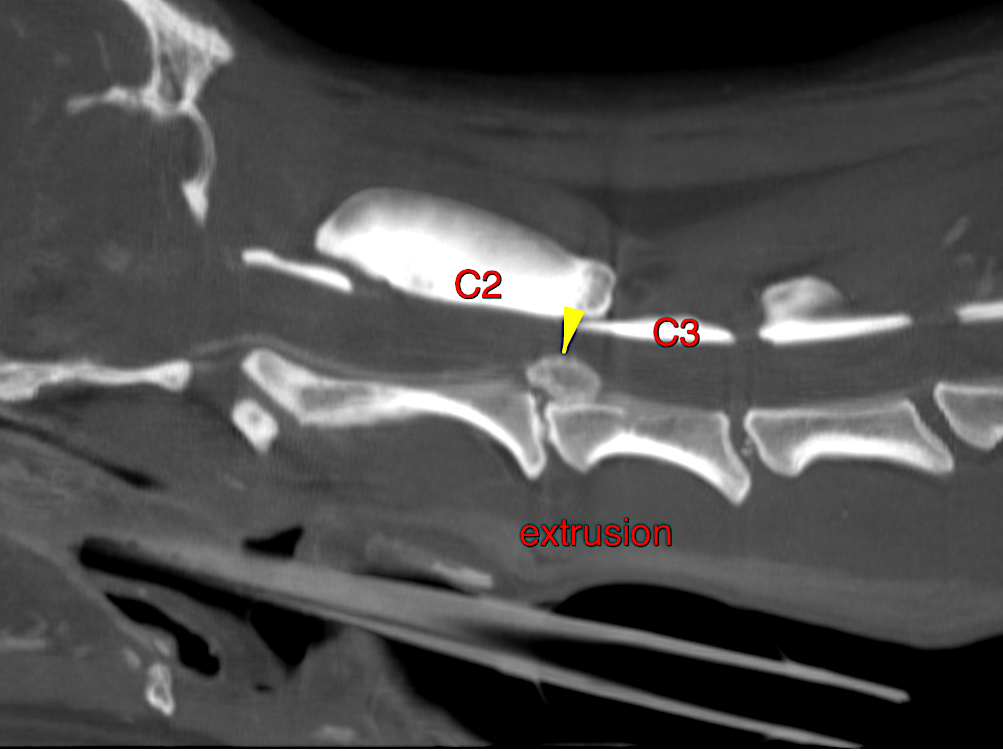
(Explanation: the white is the vertebrae. C2 and C3 are noted. The grey “ribbon” inside the vertebrae is the spinal cord. The disc is shown by the yellow arrow. You can also see that the “disc space,” directly below the disc, is collapsed)
Based on those findings, I recommended surgery to remove the slipped disc (“ventral slot” surgery). In addition, a preventive surgery (“fenestration”) was performed to remove the center of the discs below the slipped disc. Since we physically remove part of the disc, it lowers the risk of another slipped disc in the future (in case you’re wondering why the discs above were not taken care of, this is only specific to Snoopy, whose disc was at the very beginning of the neck).
Are there other treatment options?
Other treatments for a slipped disc can include medications (steroids – which are out of favor in 2018), acupuncture and physical therapy. For me, the best, definitive treatment is surgery. It’s like having a pebble in your shoe: you can try physical therapy, acupuncture or medications, but the only long-term solution is to remove the pebble.
Look at the picture of the CAT scan again. What else, besides surgery, is going to make this huge disc go away? What else is going to stop putting so much pressure on the nerves in the spinal cord?
Snoopy recovered at home uneventfully. He was confined to a small area for 8 weeks, then allowed to slowly return to his normal activity. Two months after surgery, his owner was happy to report that Snoopy was back to his normal Beagle self.
Phil Zeltzman, DVM, DACVS, CVJ, Fear Free Certified

Dr. Phil Zeltzman is a traveling veterinary surgeon in Pennsylvania & New Jersey. An award-winning author, he loves to share his adventures in practice along with information about vet medicine and surgery that can really help your pets. Dr. Zeltzman specializes in orthopedic, neurologic, cancer, and soft tissue surgeries for dogs, cats, and small exotics. By working with local family vets, he offers the best surgical care, safest anesthesia, and utmost pain management to all his patients. Sign up to get an email when he updates his blog, and follow him on Facebook, too!
Troubling Mass for Tiny Reese
Reese, a 7 year old Chihuahua, was brought to his family vet because of raspy, difficult breathing.
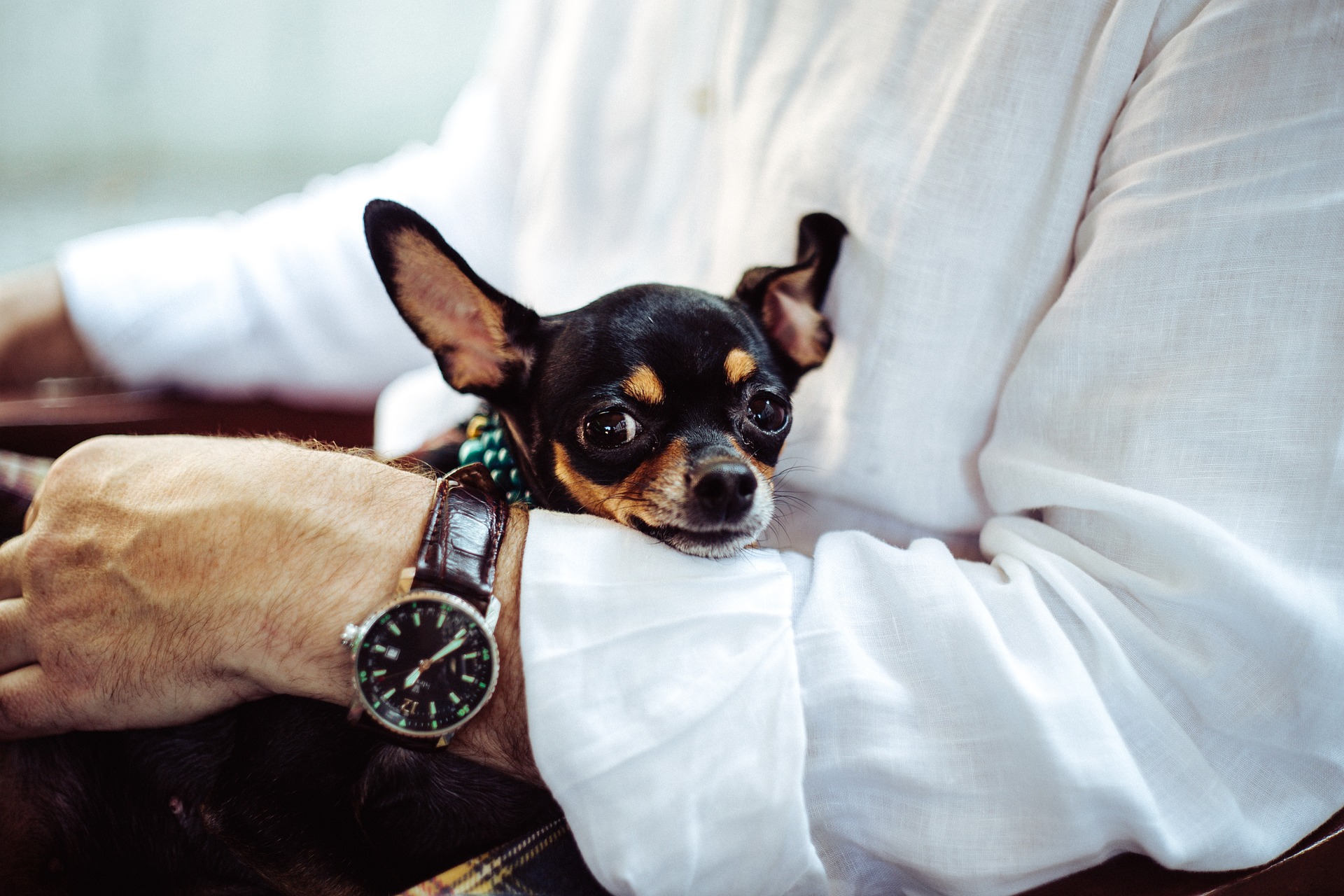
He had a walnut-sized mass (in an 8 lb Chihuahua!) on his neck, near the thyroid glands.
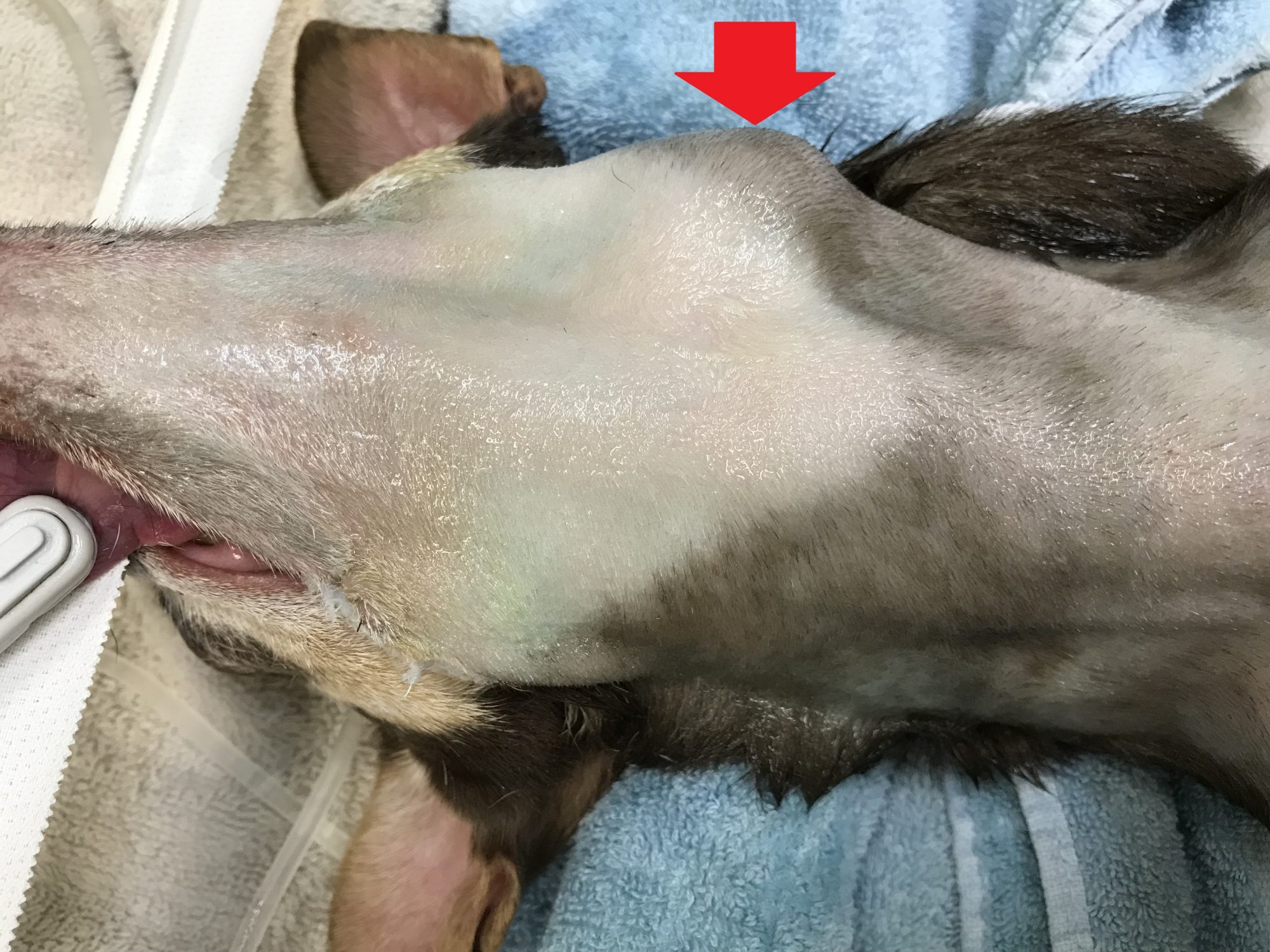
Reese’s vet logically suspected that the mass was pushing on his windpipe. Surgery was recommended to remove and biopsy the mass.
Prior to surgery, chest X-rays were taken to make sure there was no spreading to the lungs. Blood work was normal, and it was decided that Reese was a good candidate for anesthesia and surgery.
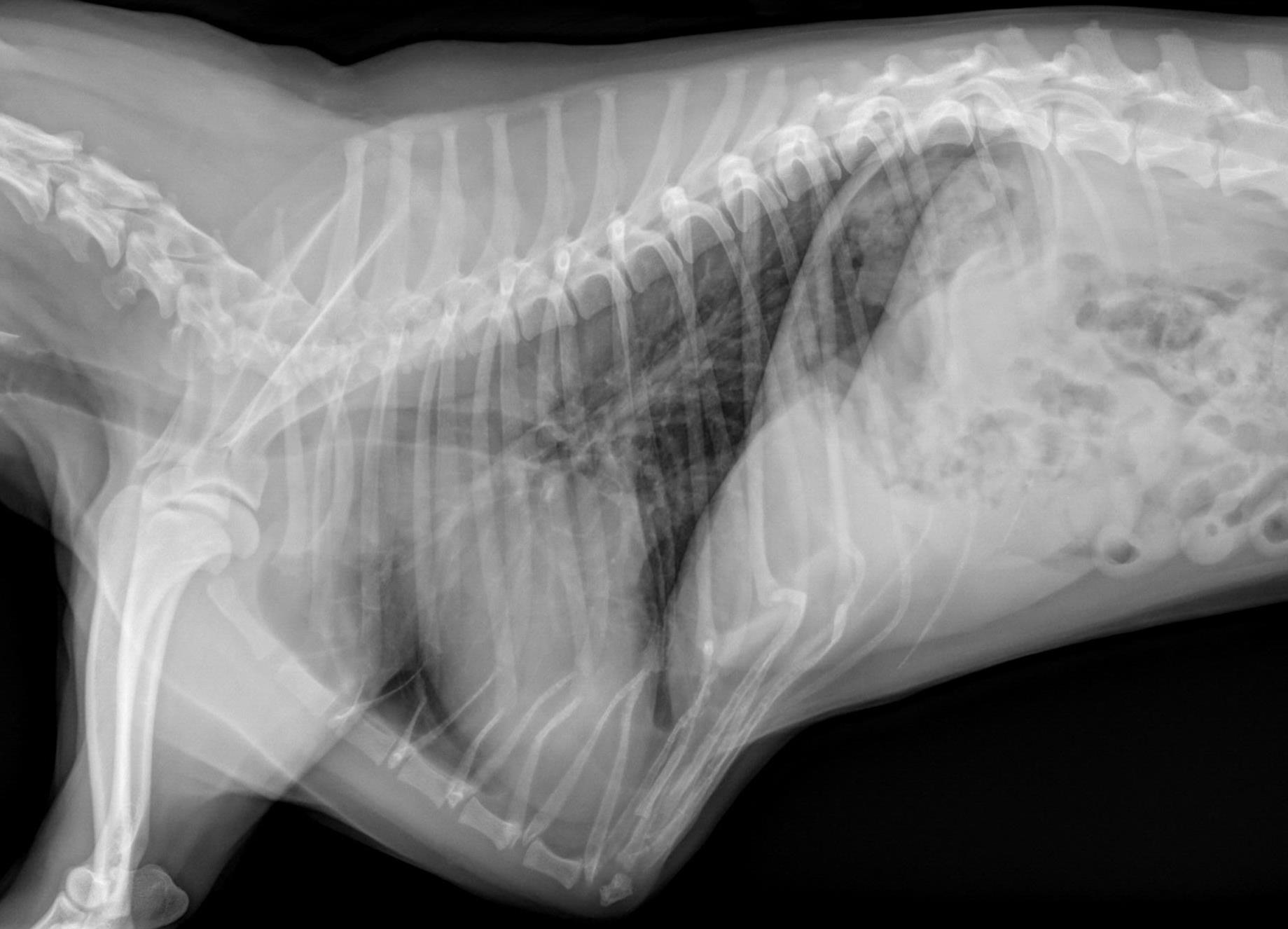
I was called in to Barton Heights Veterinary Hospital (www.bartonheights.com ) to remove the mass
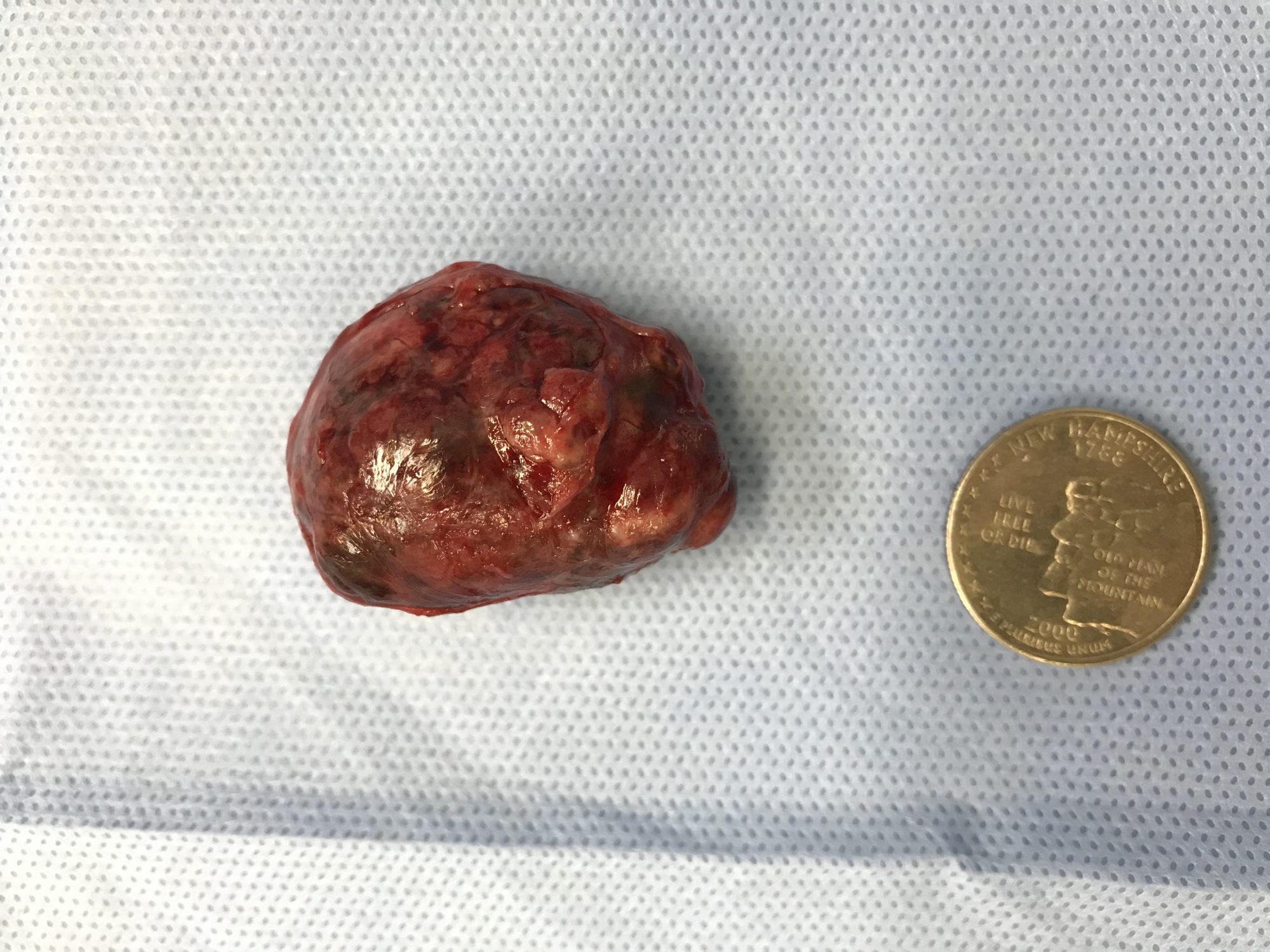
Surgery was successful. Reese recovered uneventfully and his breathing improved immediately following surgery, as soon as he woke up from anesthesia.
A week later, the biopsy confirmed that the mass was thyroid cancer (carcinoma), which had been removed it in its entirety. This is not a good disease, but we had bought time and improved Reese’s quality of life.
Reese’s owner was rewarded by a happy pup who can enjoy life again.
Phil Zeltzman, DVM, DACVS, CVJ, Fear Free Certified

Dr. Phil Zeltzman is a traveling veterinary surgeon in Pennsylvania & New Jersey. An award-winning author, he loves to share his adventures in practice along with information about vet medicine and surgery that can really help your pets. Dr. Zeltzman specializes in orthopedic, neurologic, cancer, and soft tissue surgeries for dogs, cats, and small exotics. By working with local family vets, he offers the best surgical care, safest anesthesia, and utmost pain management to all his patients. Sign up to get an email when he updates his blog, and follow him on Facebook, too!
What I’m thankful for…
I am always very thankful to my clients and for the trust they place in me.
They trust that I will be able to fix their pet, or relieve their pain, or improve their quality of life. This is my life’s mission, it’s my passion, and it’s a huge honor to be able to perform surgery on their family member.
Every year, a few amazing stories are top of mind. The kind of situations where I can’t even express how grateful I am. Such is the story of Scout.
Scout’s owner found me through my web site (www.DrPhilZeltzman.com). Amazingly, she drove all the way from Charlotte, North Carolina, for me to do surgery on her dog Scout, a sweet 8 year old Golden.
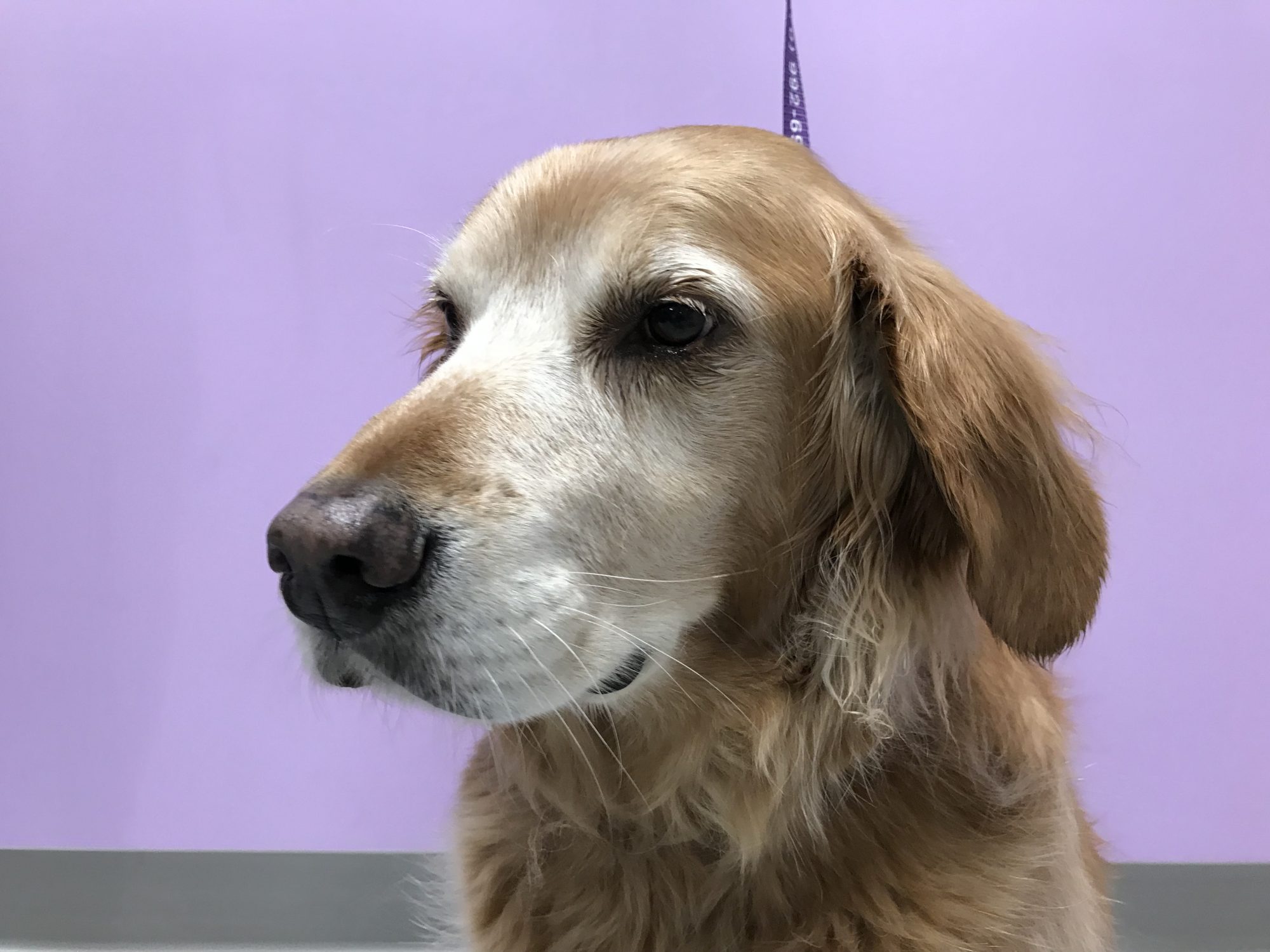
Scout’s owner wanted me to do a TTA Rapid on her buddy. This is a specialized surgery to address a torn ACL in the knee. I told her that there are plenty of board-certified surgeons in North Carolina, but she wanted me to do the surgery! So she drove all the way to Pennsylvania! This is quite humbling…
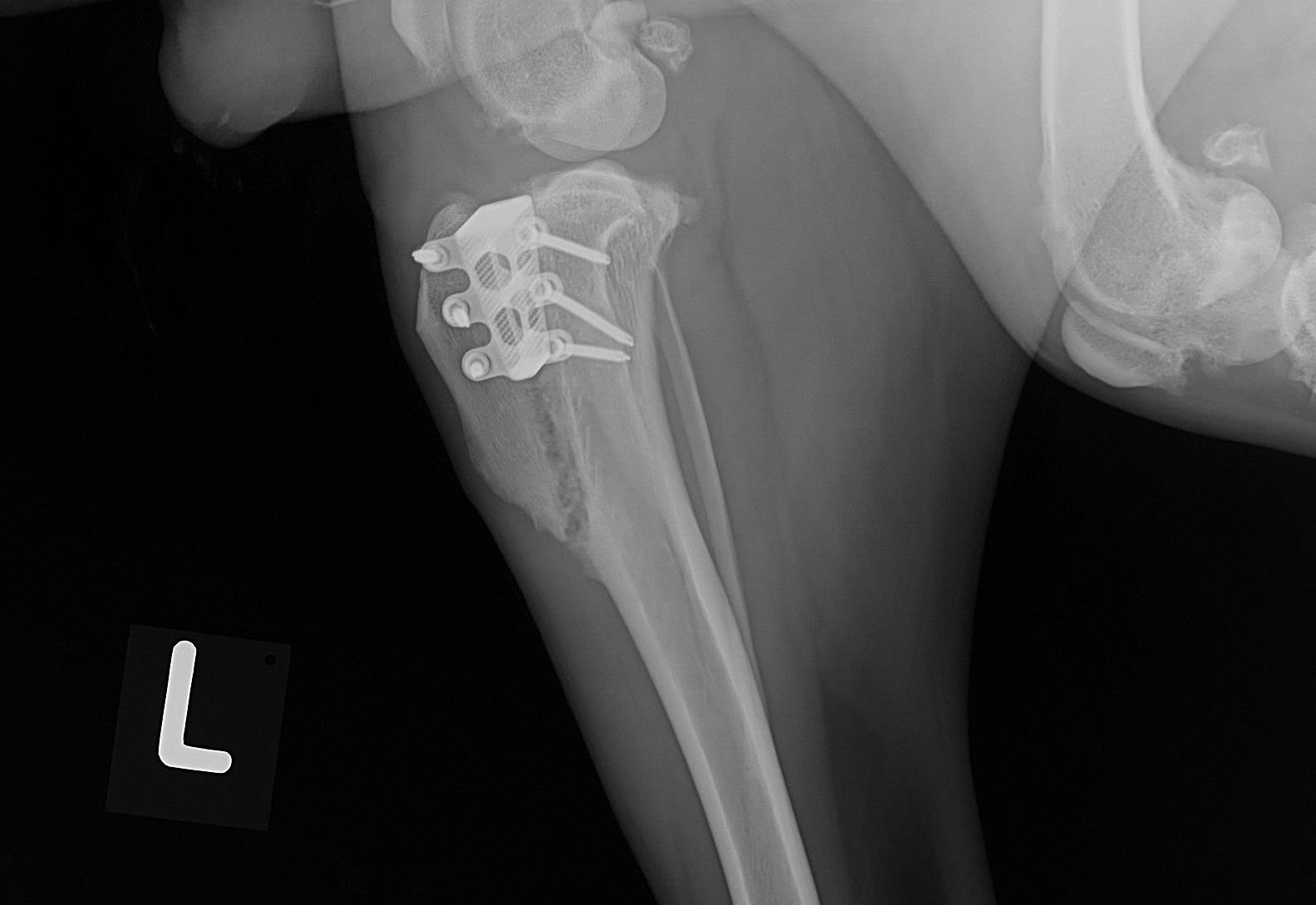
After two months of recovery and TLC at home, Scout is now doing very well. His owner says he is almost 100% close to normal.
My wonderful nurses and I wish you, your family and your pets a peaceful Thanksgiving.
Phil Zeltzman, DVM, DACVS, CVJ, Fear Free Certified

Dr. Phil Zeltzman is a traveling veterinary surgeon in Pennsylvania & New Jersey. An award-winning author, he loves to share his adventures in practice along with information about vet medicine and surgery that can really help your pets. Dr. Zeltzman specializes in orthopedic, neurologic, cancer, and soft tissue surgeries for dogs, cats, and small exotics. By working with local family vets, he offers the best surgical care, safest anesthesia, and utmost pain management to all his patients. Sign up to get an email when he updates his blog, and follow him on Facebook, too!
Lucy becomes an amputee
Lucy, a sweet 6 year old Golden, started limping in her left back leg.
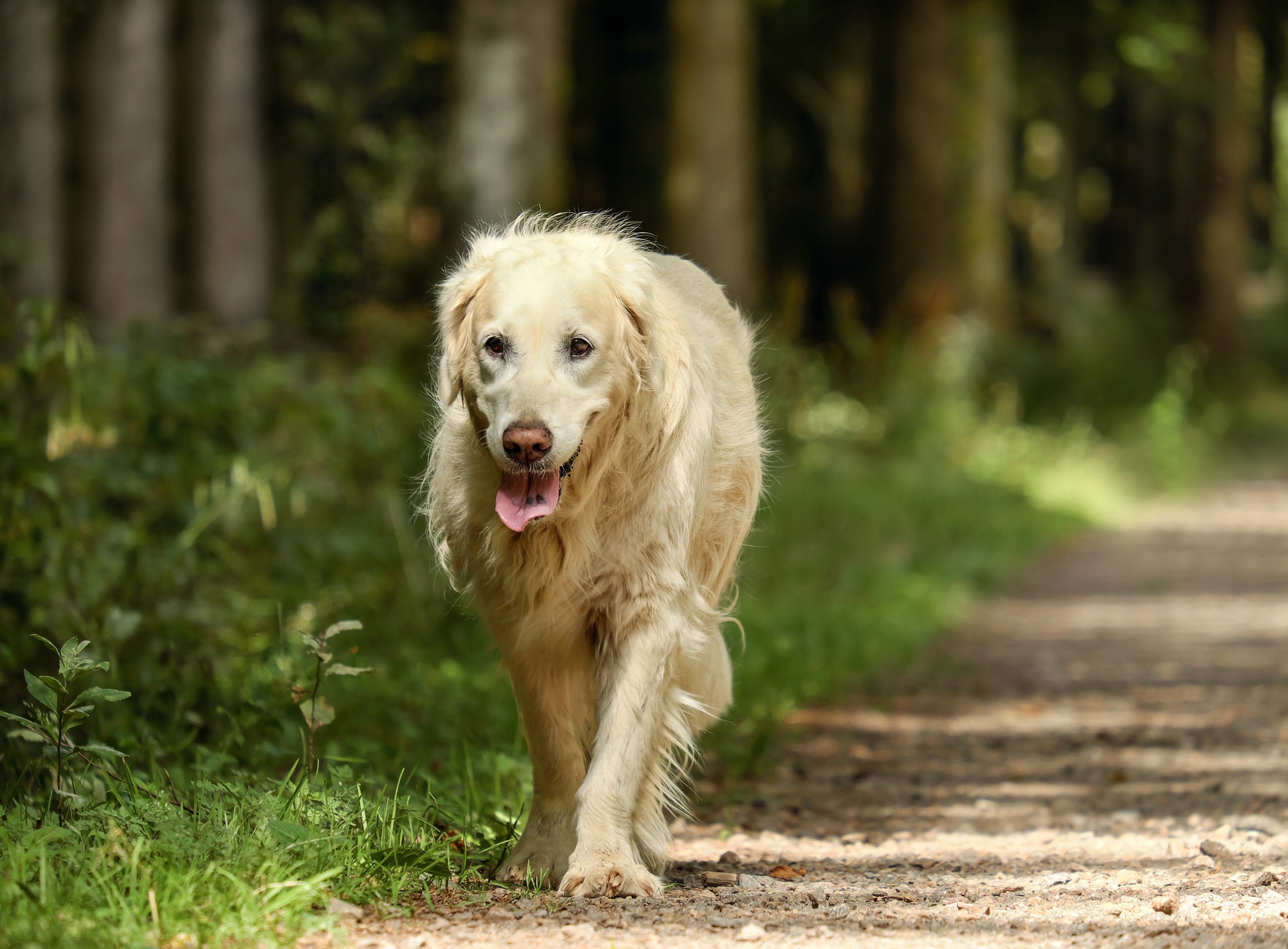
Her family vet’s X-rays showed that something, most likely bone cancer, was eating her thigh bone away (femur). The blue arrow shows normal bone; the red arrow shows bone that has been either eaten away or that has created a mass.
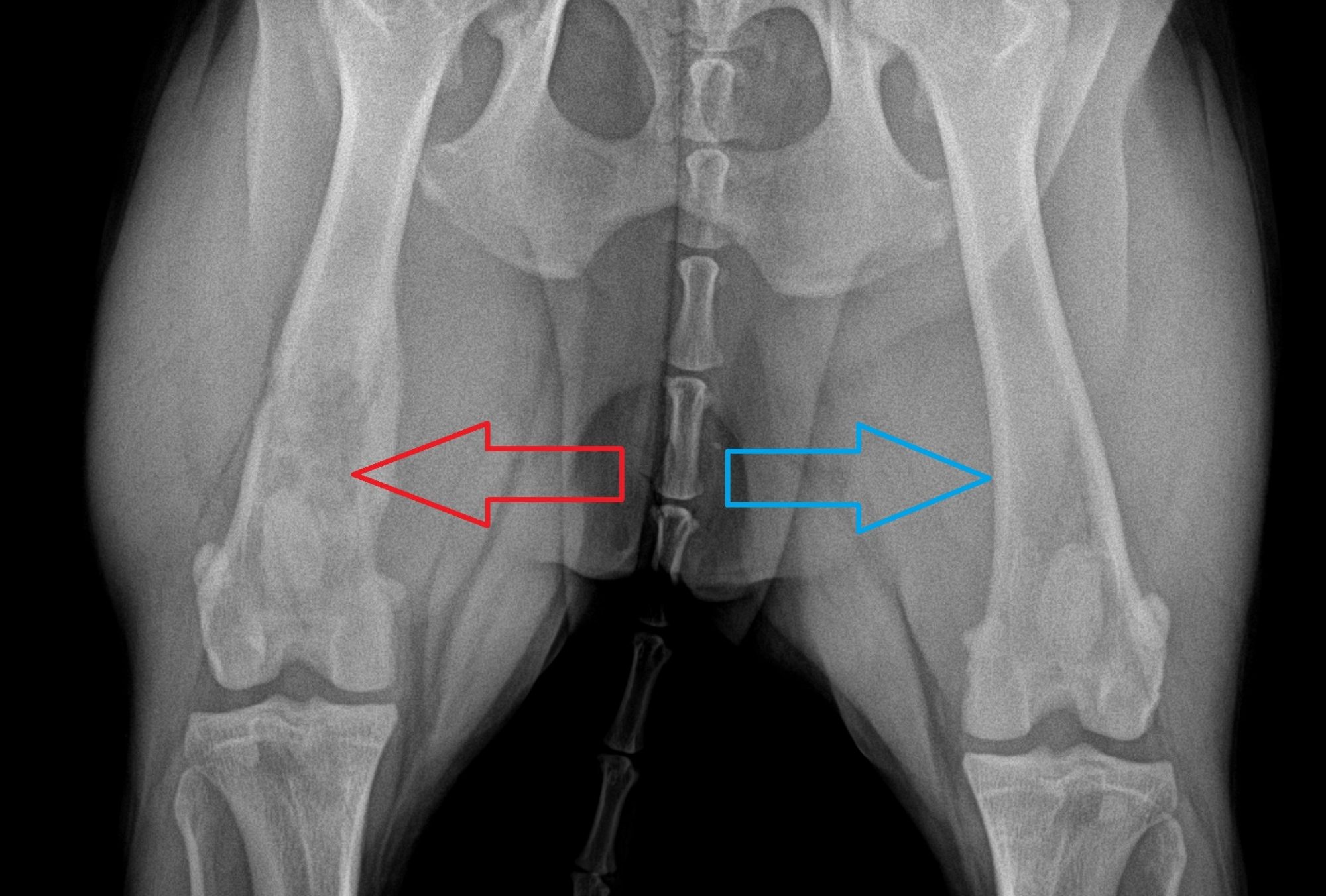
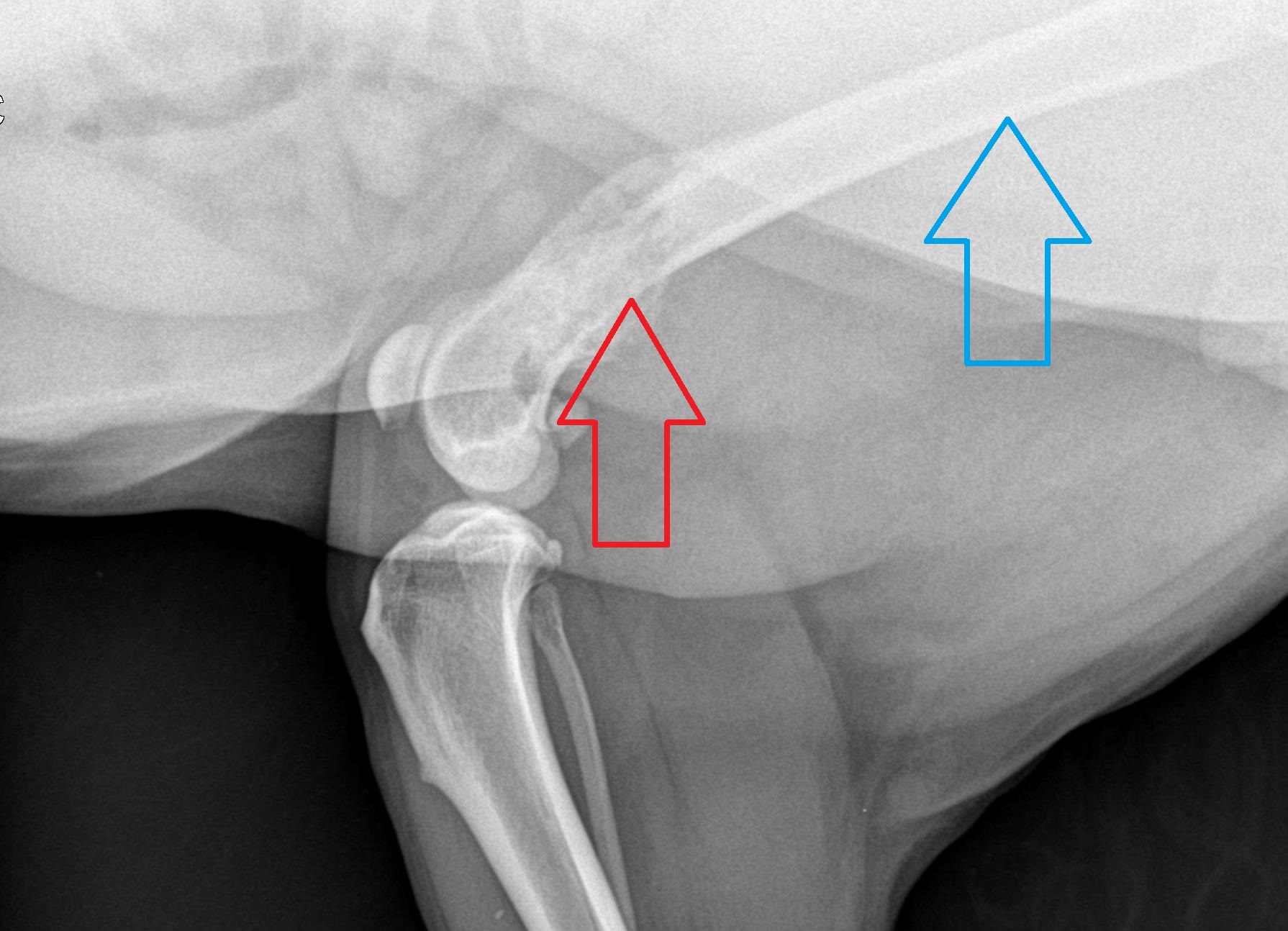
There weren’t a whole lot of options: the best course of action was to sacrifice the leg. Before that, we ensured that her blood work was normal and that chest X-rays did not show any spreading of the (presumed) cancer to the lungs.
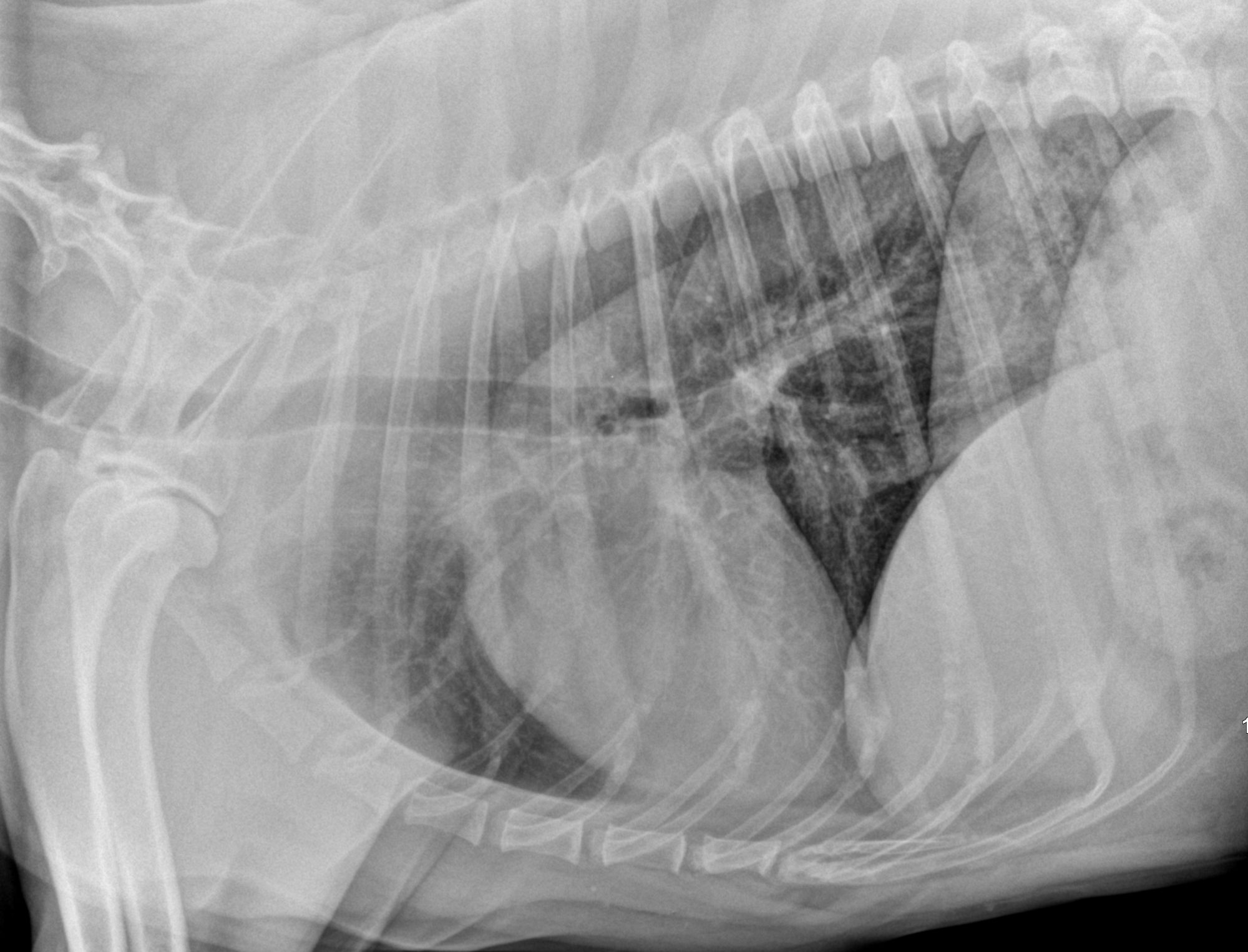
A few days later, I traveled to the practice to perform the amputation. Everything went well in surgery.
The very next day, Lucy started to walk around on 3 legs. She was comfortable and started to eat nicely.
A week later, the biopsy confirmed the suspicion of bone cancer (osteosarcoma). The next step was to discuss chemotherapy, which is recommended in the case of bone cancer.
With amputation alone for confirmed osteosarcoma, the average survival is 3 to 6 months. With amputation and chemotherapy, we hope for an average survival of at least one year. When we recommend treatment, our goal is more about quality of life than quantity of life (aka survival time).
Amputation is typically needed because of severe trauma or cancer – most often bone cancer. No pet owner ever opens a bottle of champagne when their pet needs a leg amputation. Yet it’s very important to understand and believe that virtually 100% of dogs and cats do great on 3 legs. My most surprising patient, Gator, was able to swim in the pool with 3 legs (and a life jacket).
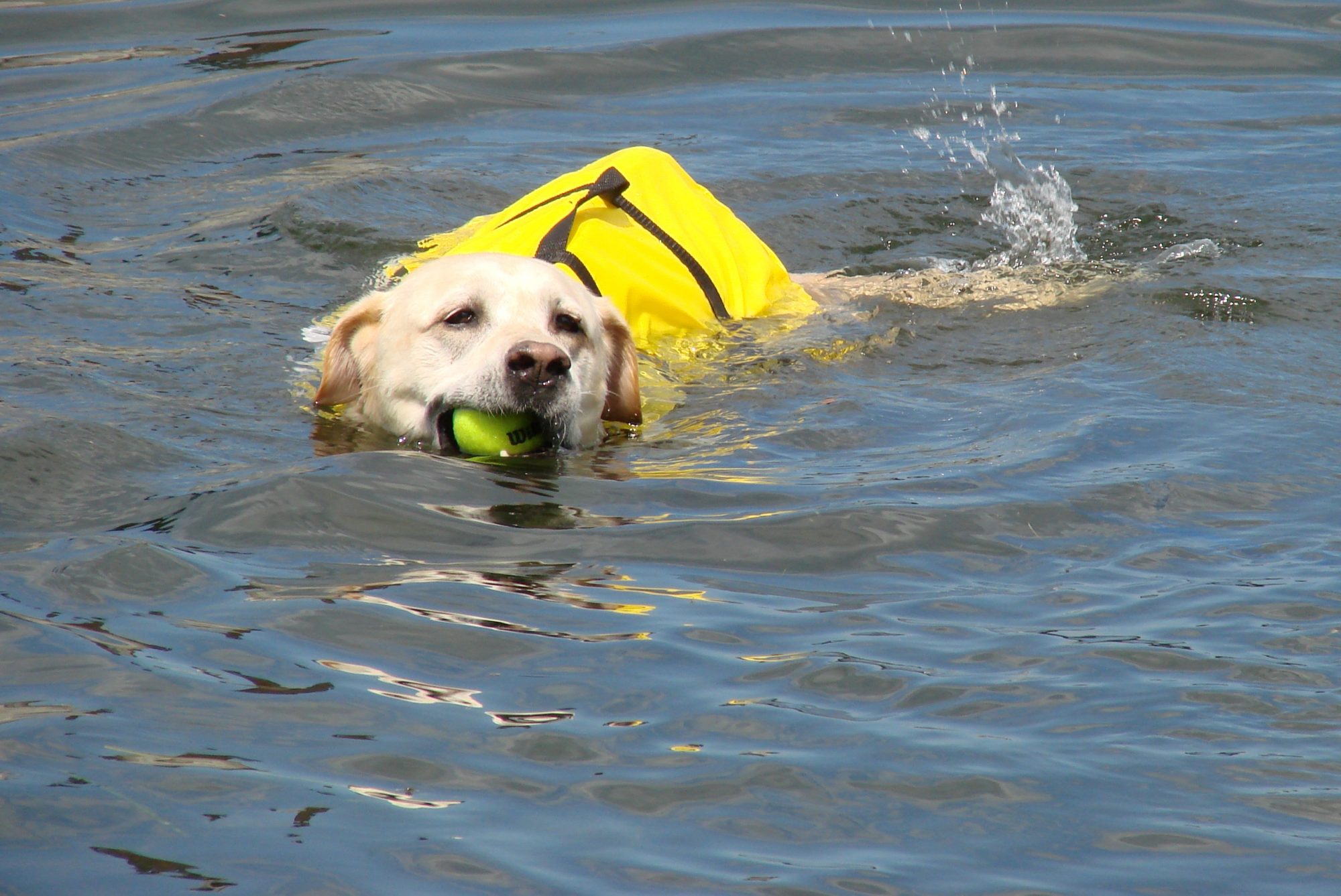
To this day, I have never met a client who has told me that they regretted their decision to amputate their pet. As long as we are on the same page, and we all decide as the pet’s best advocates, we typically get good results, regardless of the amount of time left.
In other words, we would rather have 3, 6 or 12 months of quality life, than 3 years of misery.
Phil Zeltzman, DVM, DACVS, CVJ, Fear Free Certified

Dr. Phil Zeltzman is a traveling veterinary surgeon in Pennsylvania & New Jersey. An award-winning author, he loves to share his adventures in practice along with information about vet medicine and surgery that can really help your pets. Dr. Zeltzman specializes in orthopedic, neurologic, cancer, and soft tissue surgeries for dogs, cats, and small exotics. By working with local family vets, he offers the best surgical care, safest anesthesia, and utmost pain management to all his patients. Sign up to get an email when he updates his blog, and follow him on Facebook, too!
Minnie has a tumor in the jaw bone
Minnie, a 9 year old beagle, had a cherry-sized mass behind her upper canine tooth.
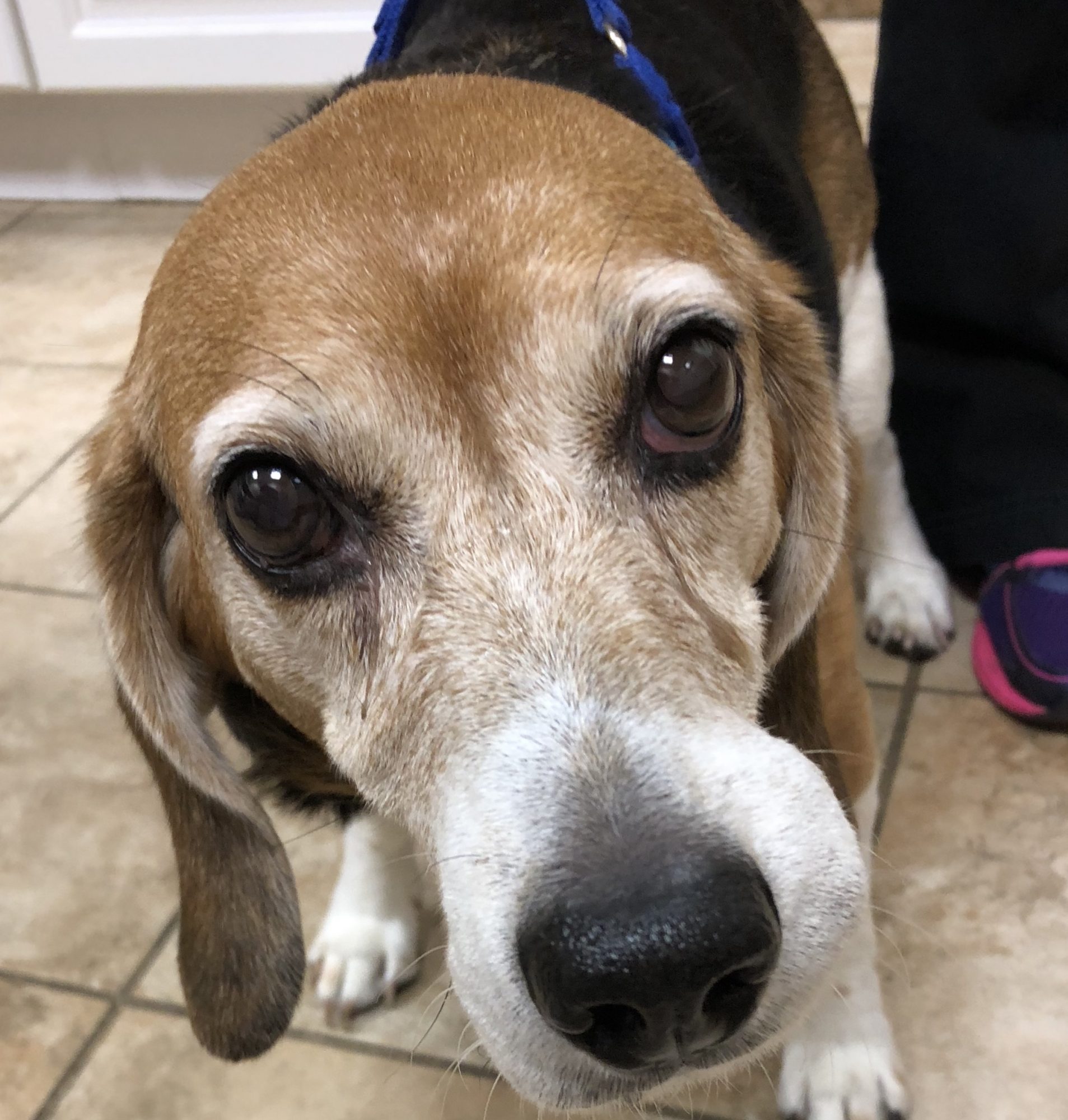
The mass had been present for a while and kept growing. Is it generically called an epulis, an unfortunate name that doesn’t mean much. An epulis can be benign or malignant. It can be unimportant or extremely aggressive. So it’s a very misleading name.
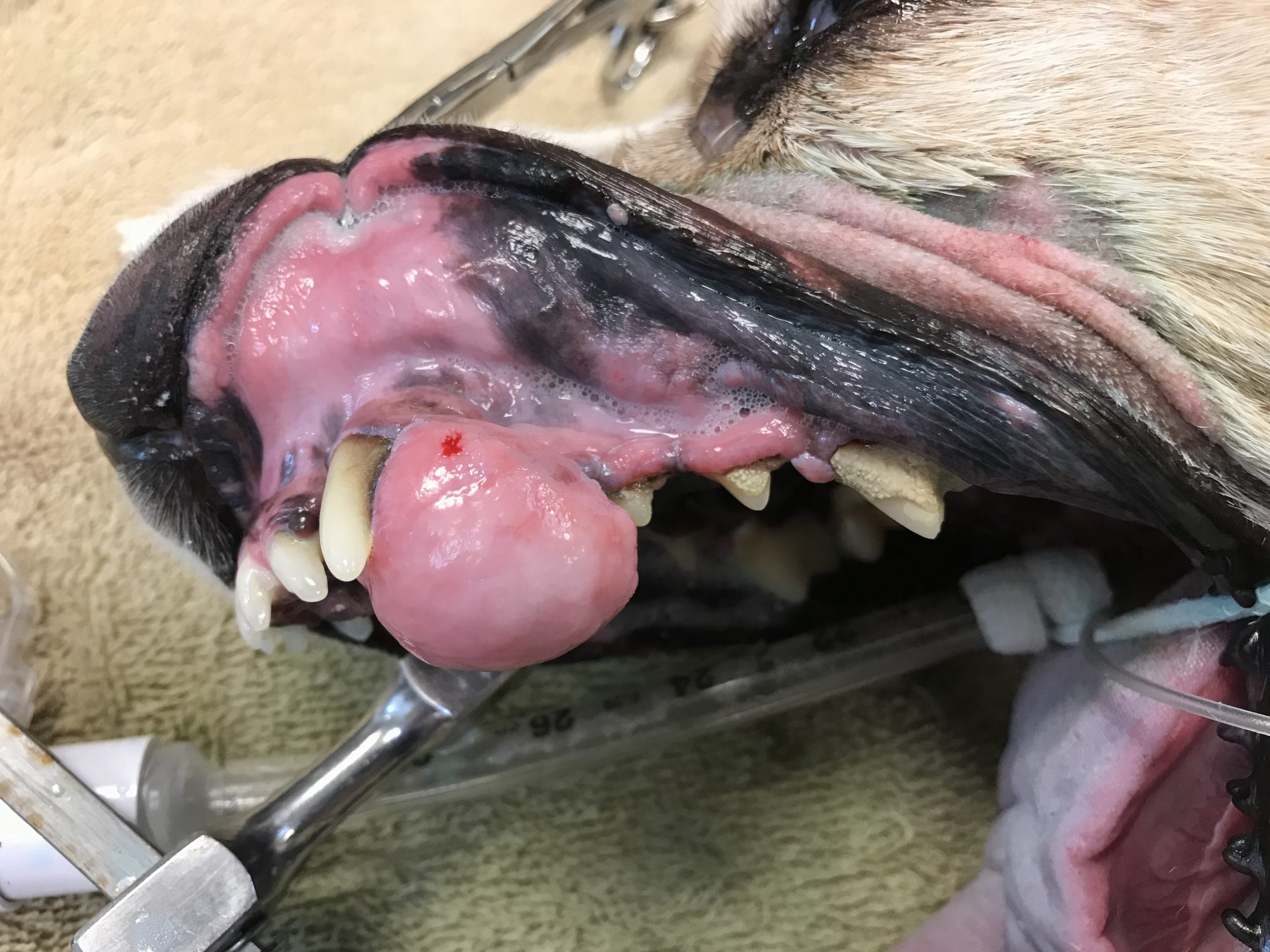
She was referred for surgery at Mountain Shadow Veterinary Hospital ( www.mountainshadowveterinary.com ) .
After a physical exam, blood work and chest X-rays (to check for spreading to the lungs), it was decided that Minnie was a good candidate for anesthesia and surgery.
Part of her upper jaw (maxilla) would have to be removed in order to hopefully “get it all.” Surgery went well.
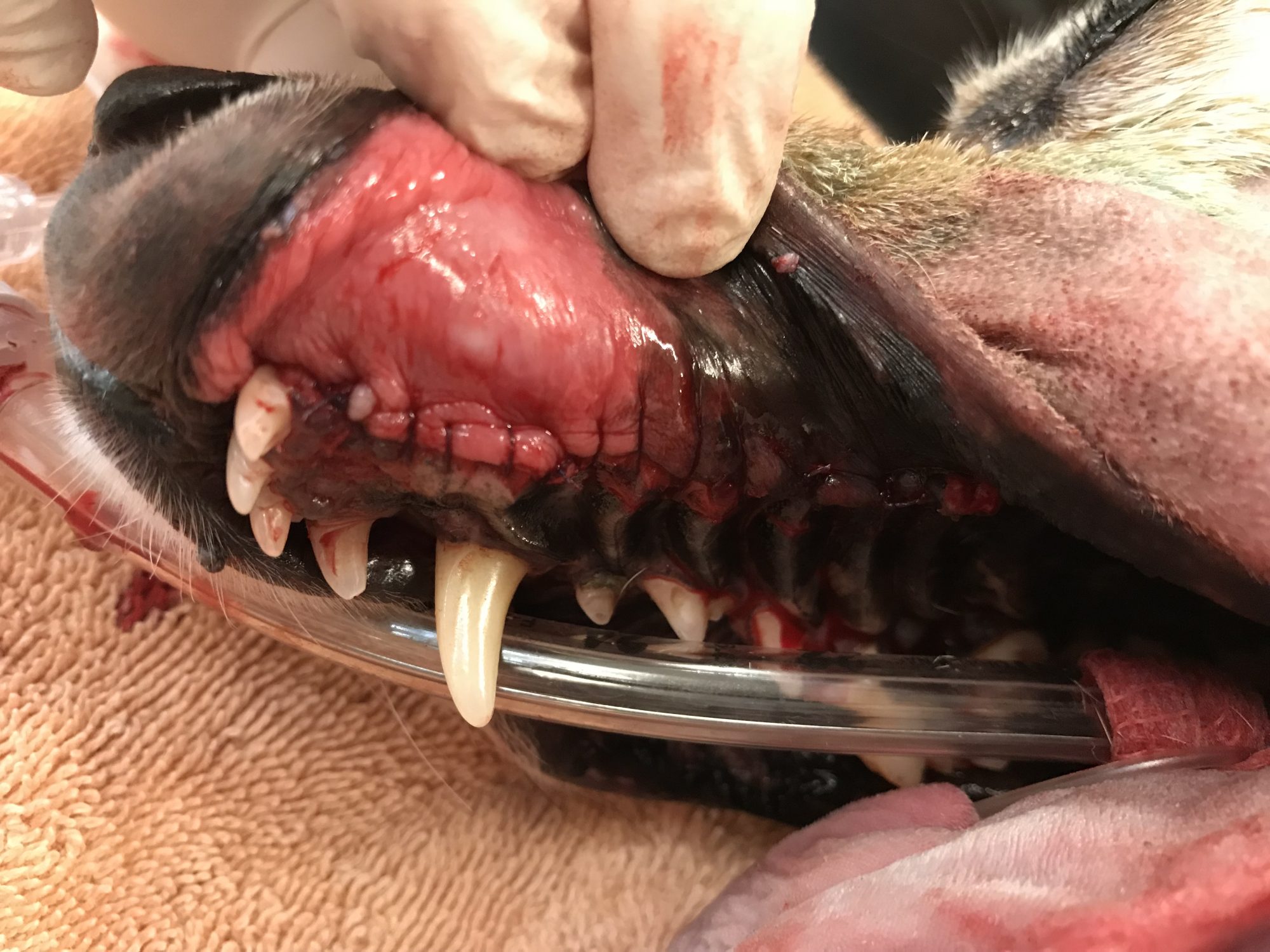
Even though pet owners are typically horrified when such an invasive surgery is recommended, pets don’t look as grotesquely disfigured as they imagine.
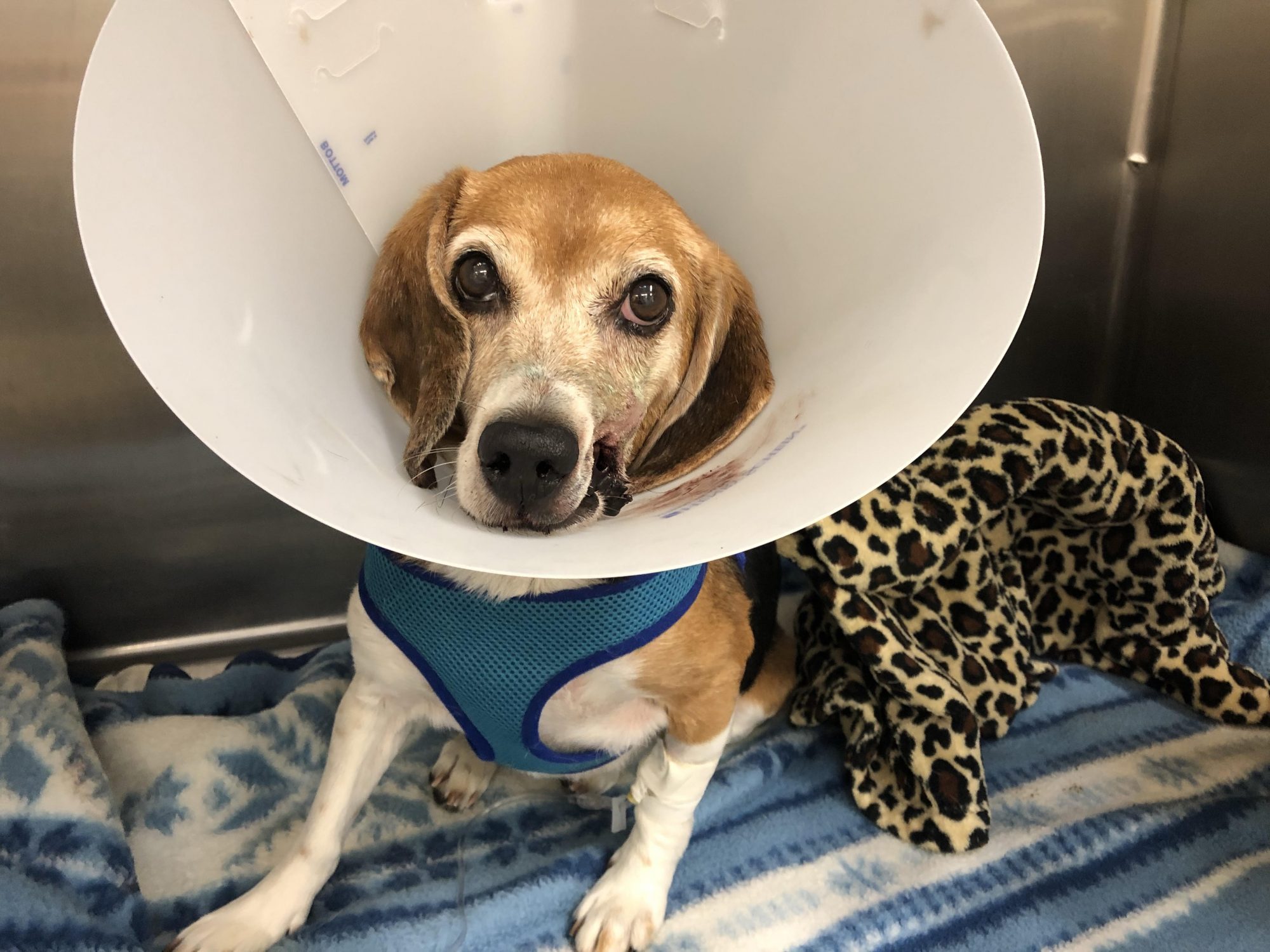
The most amazing thing is that most dogs eat soon after surgery, sometimes the evening of surgery! In Minnie’s case, she ate the day after surgery.
About a week later, the biopsy came back as ameloblastoma, which is a “locally aggressive” tumor. What it means is that the tumor eats the bone away. This is the other reason we need to remove so much tissue (bone) around the mass.
Even though a large portion of her jaw had to be removed, Minnie has recovered very well and can now enjoy life again.
Phil Zeltzman, DVM, DACVS, CVJ, Fear Free Certified

Dr. Phil Zeltzman is a traveling veterinary surgeon in Pennsylvania & New Jersey. An award-winning author, he loves to share his adventures in practice along with information about vet medicine and surgery that can really help your pets. Dr. Zeltzman specializes in orthopedic, neurologic, cancer, and soft tissue surgeries for dogs, cats, and small exotics. By working with local family vets, he offers the best surgical care, safest anesthesia, and utmost pain management to all his patients. Sign up to get an email when he updates his blog, and follow him on Facebook, too!

